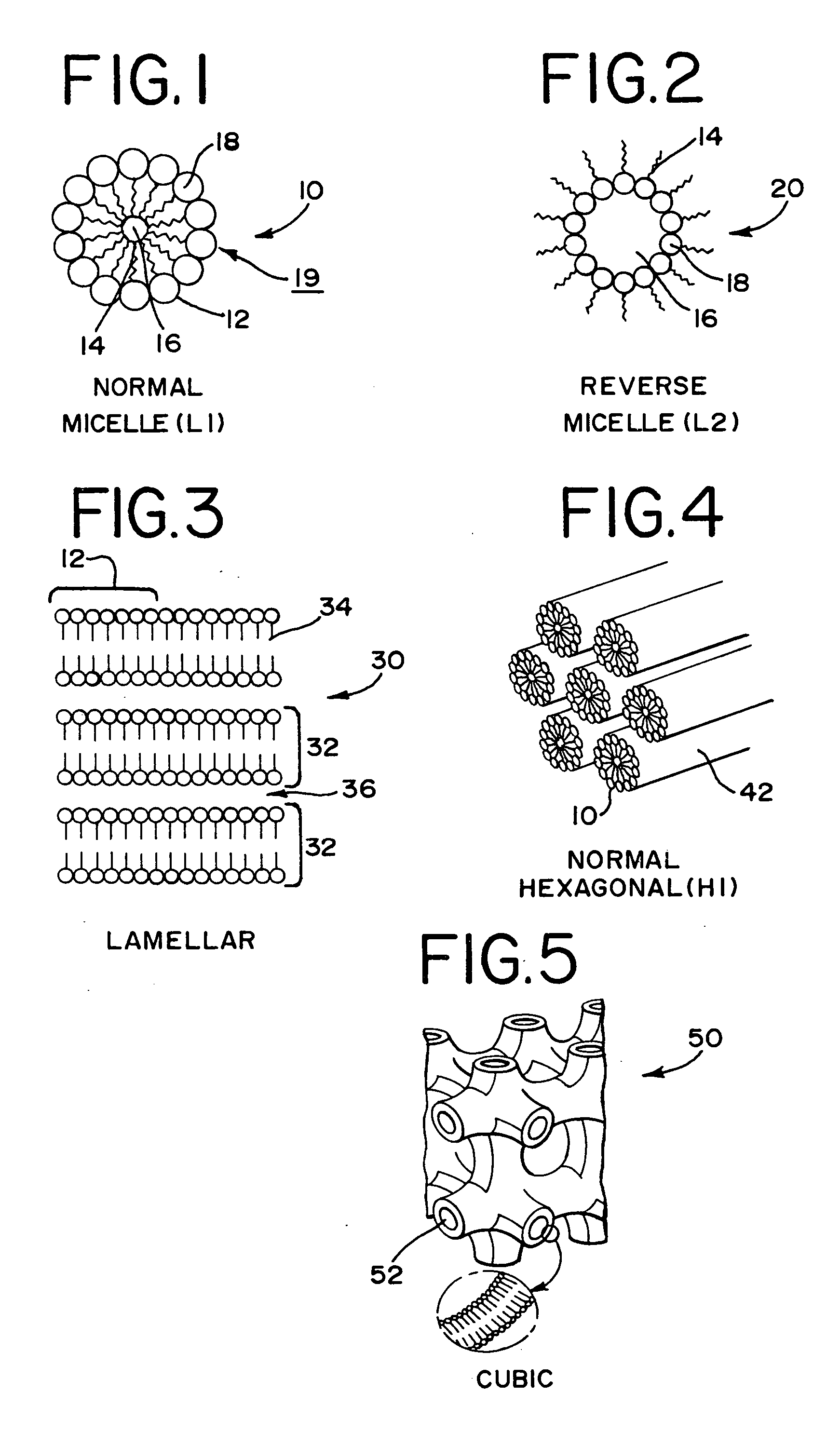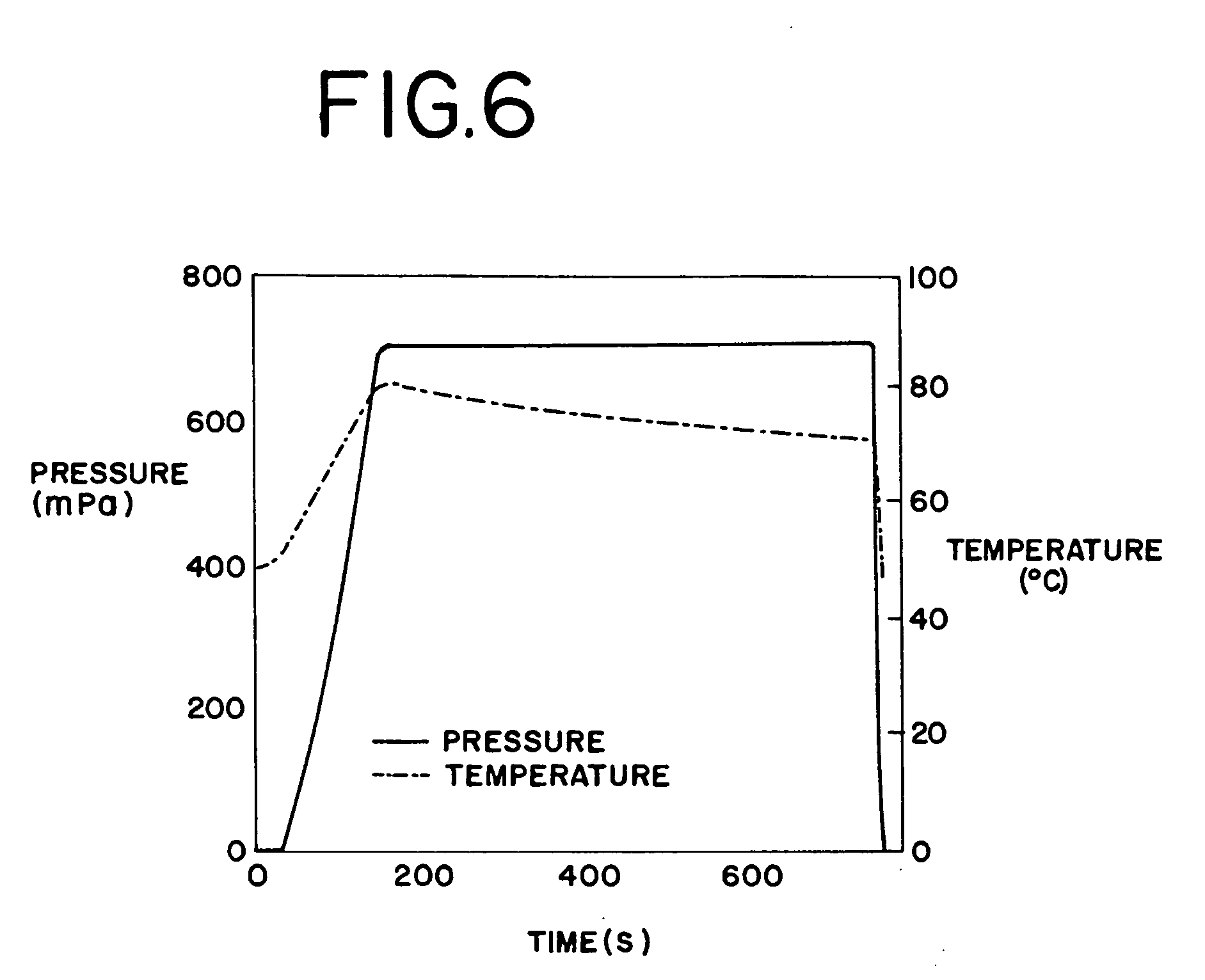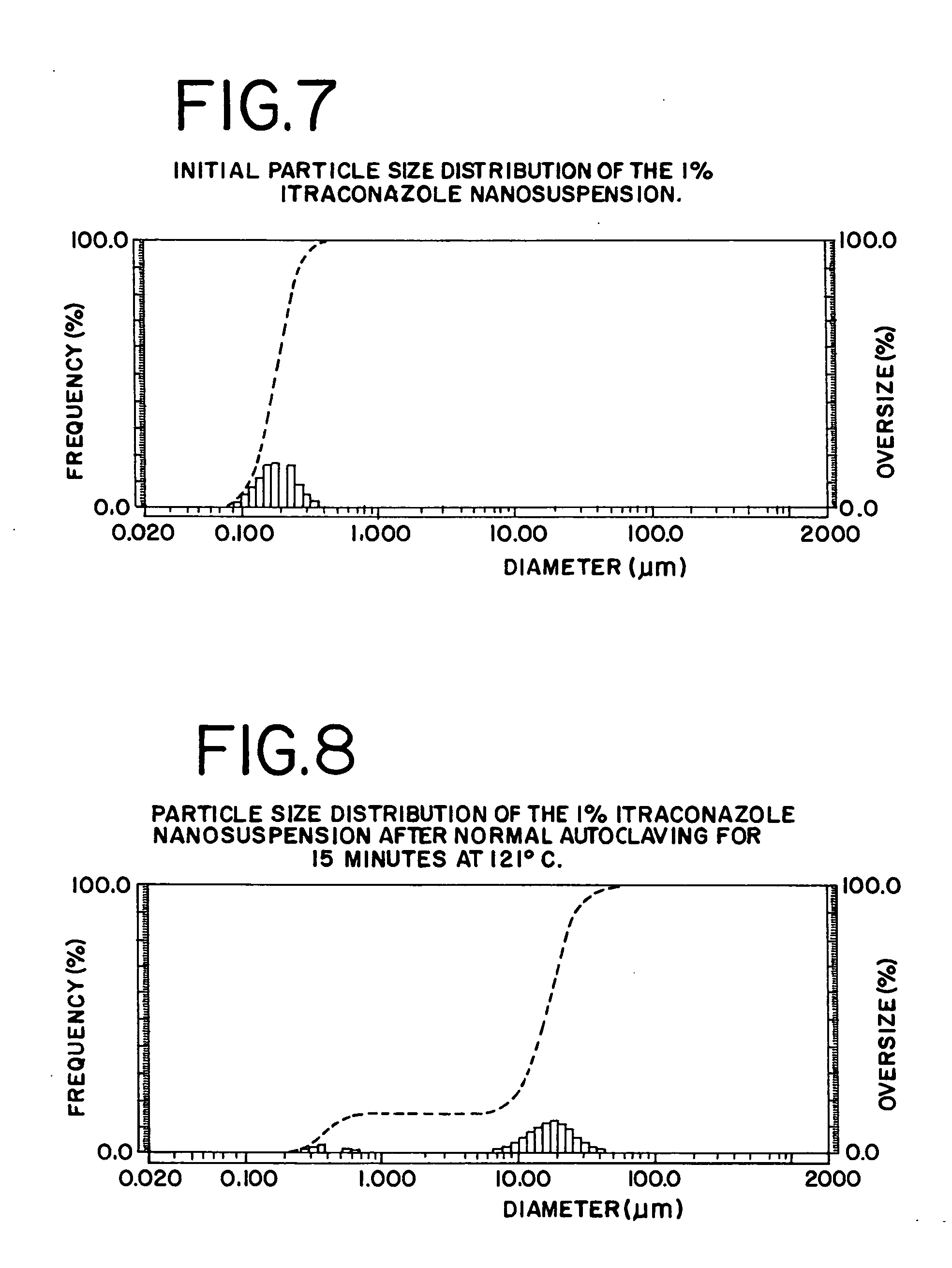High-pressure sterilization to terminally sterilize pharmaceutical preparations and medical products
a technology of terminal autoclaving and high-pressure sterilization, which is applied in the direction of disinfection, water installations, construction, etc., can solve the problems of difficult maintenance of the physical stability of the drug/surfactant assembly, inability to tolerate terminal autoclaving, and heat-sensitive small particle suspensions
- Summary
- Abstract
- Description
- Claims
- Application Information
AI Technical Summary
Benefits of technology
Problems solved by technology
Method used
Image
Examples
example 1
High-Pressure Sterilization of an Itraconazole Nanosuspension
[0107] A 1% itraconazole nanosuspension containing 0.1% poloxamer 188, 0.1% deoxycholate, and 2.2% glycerin was manufactured using a combination microprecipitation-homogenization procedure (U.S. patent application 2002 / 0127278 A1). The initial particle size distribution as measured by static light scattering (Horiba LA-920) is shown in FIG. 7.
[0108] As a positive control, a 5 ml sample of the nanosuspension was first sterilized using a normal autoclaving cycle of 121° C. for 15 minutes. This resulted in significant aggregation of the particles, as shown by the light scattering data in FIG. 8. Aggregation of this sort is typical for nanosuspensions stabilized with surfactants whose cloud point is less than 121° C. (Cloud point of Poloxamer 188=˜110° C.).
[0109] In contrast, when the same nanosuspension was sterilized using the high-pressure sterilization cycle shown in FIG. 9, the resulting particle size distribution of t...
PUM
| Property | Measurement | Unit |
|---|---|---|
| temperature | aaaaa | aaaaa |
| temperature | aaaaa | aaaaa |
| size | aaaaa | aaaaa |
Abstract
Description
Claims
Application Information
 Login to View More
Login to View More - R&D
- Intellectual Property
- Life Sciences
- Materials
- Tech Scout
- Unparalleled Data Quality
- Higher Quality Content
- 60% Fewer Hallucinations
Browse by: Latest US Patents, China's latest patents, Technical Efficacy Thesaurus, Application Domain, Technology Topic, Popular Technical Reports.
© 2025 PatSnap. All rights reserved.Legal|Privacy policy|Modern Slavery Act Transparency Statement|Sitemap|About US| Contact US: help@patsnap.com



